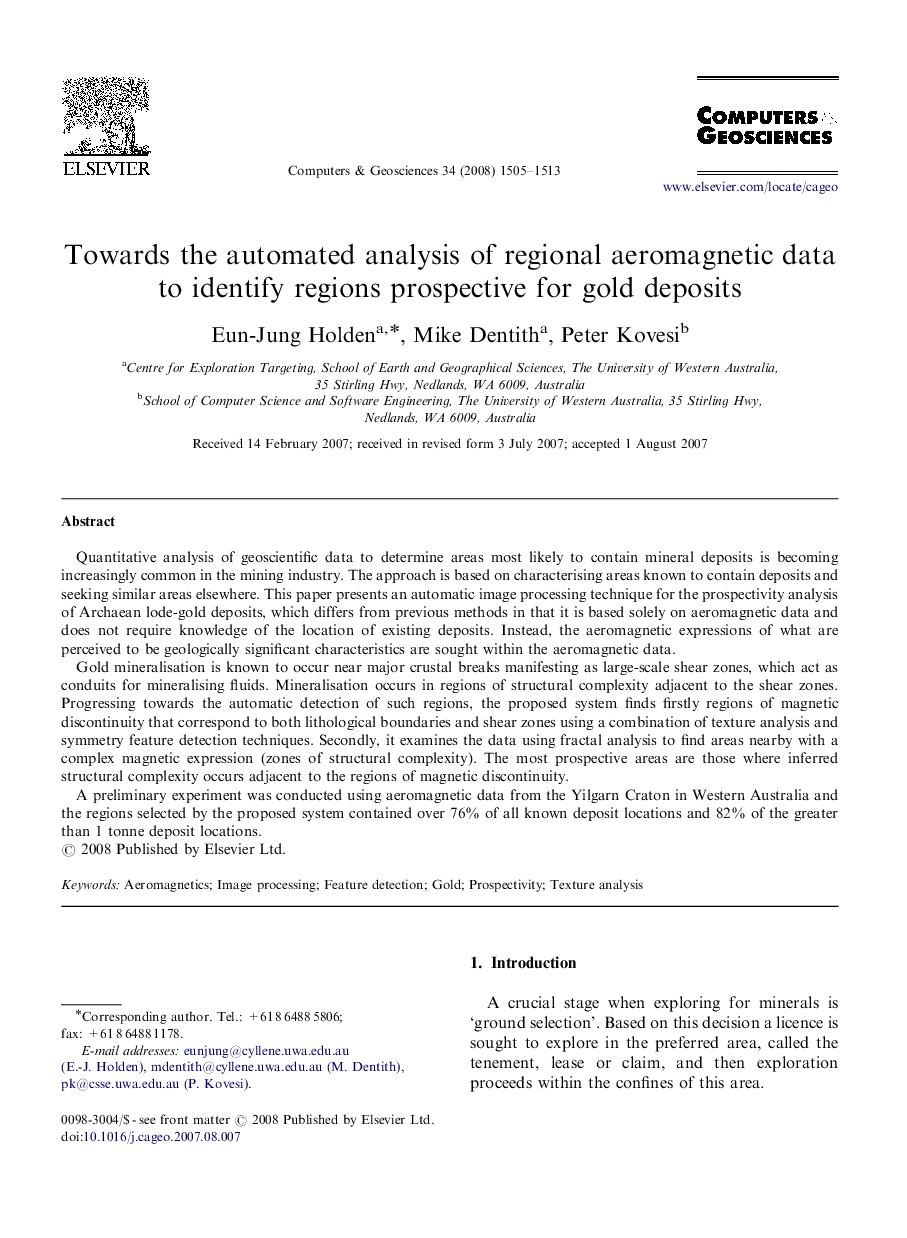| Article ID | Journal | Published Year | Pages | File Type |
|---|---|---|---|---|
| 508065 | Computers & Geosciences | 2008 | 9 Pages |
Quantitative analysis of geoscientific data to determine areas most likely to contain mineral deposits is becoming increasingly common in the mining industry. The approach is based on characterising areas known to contain deposits and seeking similar areas elsewhere. This paper presents an automatic image processing technique for the prospectivity analysis of Archaean lode-gold deposits, which differs from previous methods in that it is based solely on aeromagnetic data and does not require knowledge of the location of existing deposits. Instead, the aeromagnetic expressions of what are perceived to be geologically significant characteristics are sought within the aeromagnetic data.Gold mineralisation is known to occur near major crustal breaks manifesting as large-scale shear zones, which act as conduits for mineralising fluids. Mineralisation occurs in regions of structural complexity adjacent to the shear zones. Progressing towards the automatic detection of such regions, the proposed system finds firstly regions of magnetic discontinuity that correspond to both lithological boundaries and shear zones using a combination of texture analysis and symmetry feature detection techniques. Secondly, it examines the data using fractal analysis to find areas nearby with a complex magnetic expression (zones of structural complexity). The most prospective areas are those where inferred structural complexity occurs adjacent to the regions of magnetic discontinuity.A preliminary experiment was conducted using aeromagnetic data from the Yilgarn Craton in Western Australia and the regions selected by the proposed system contained over 76% of all known deposit locations and 82% of the greater than 1 tonne deposit locations.
